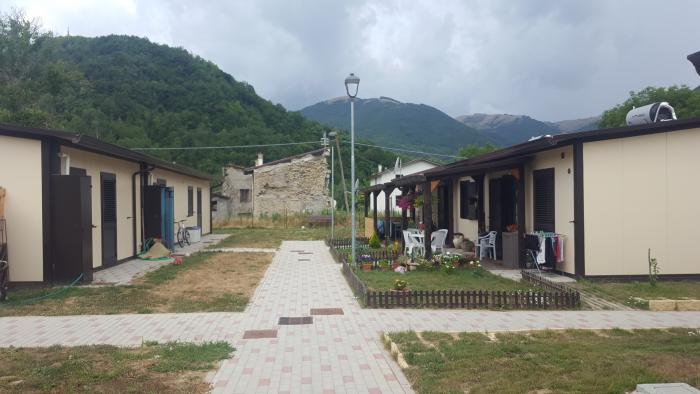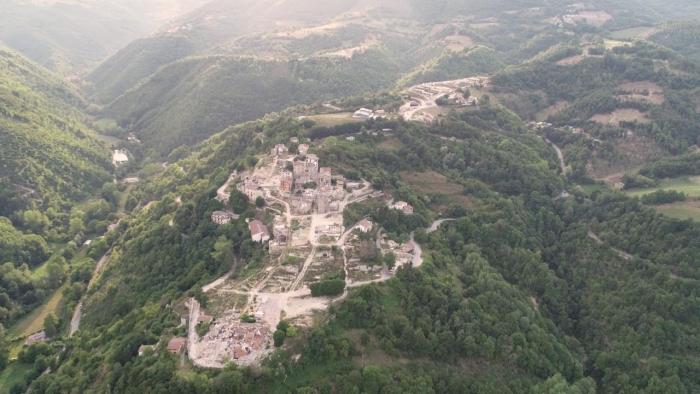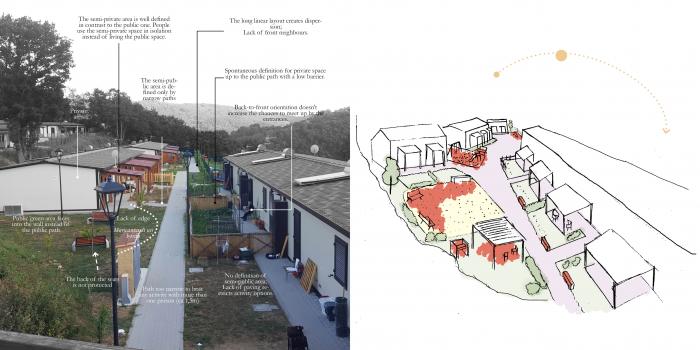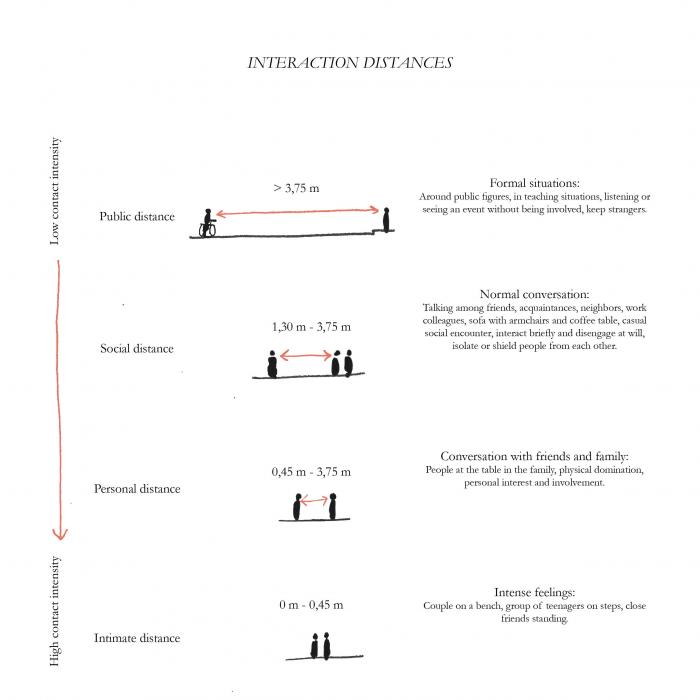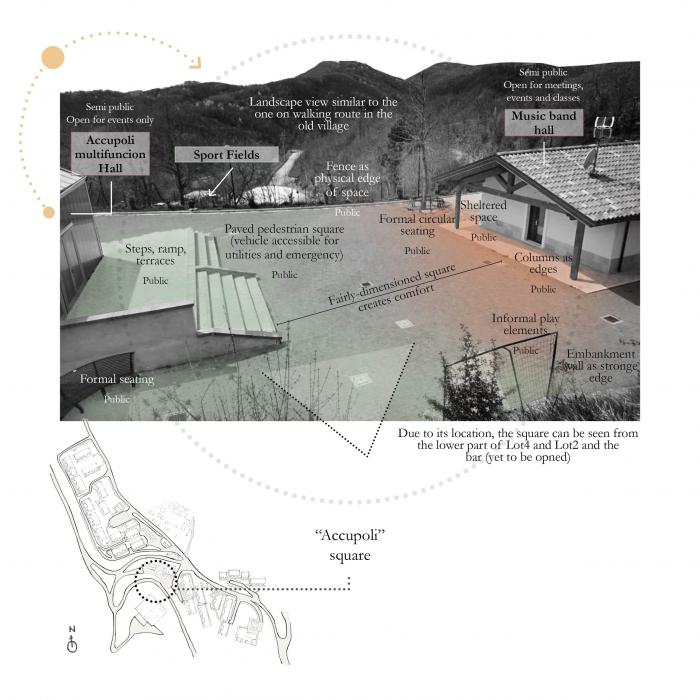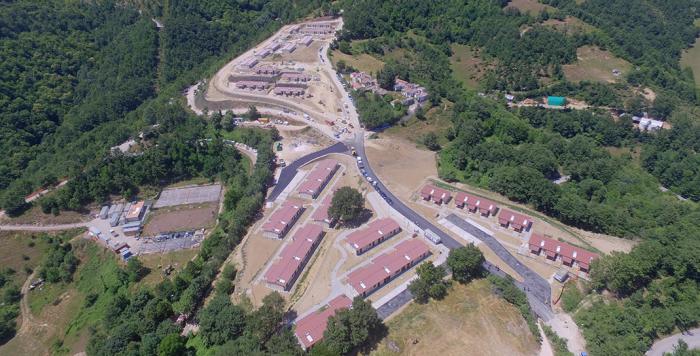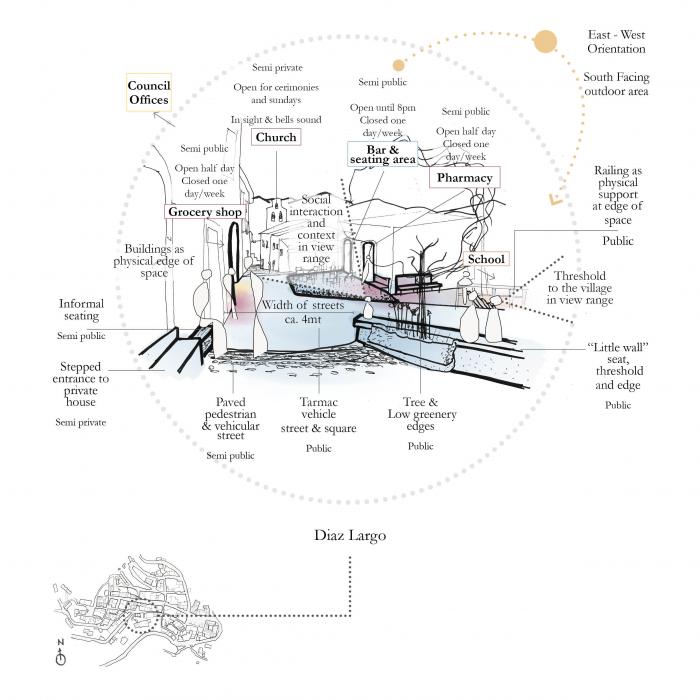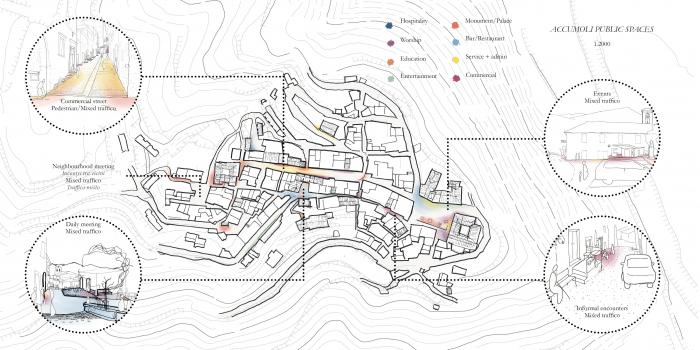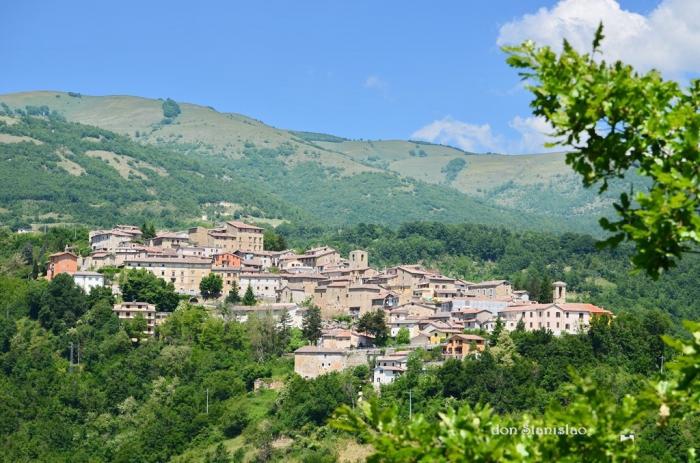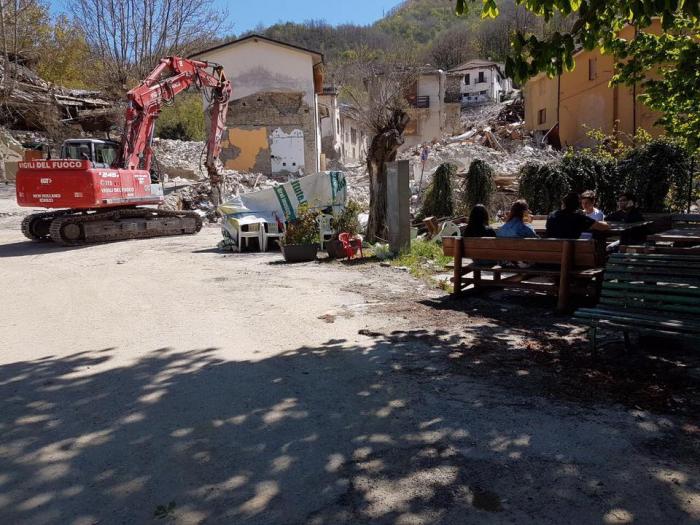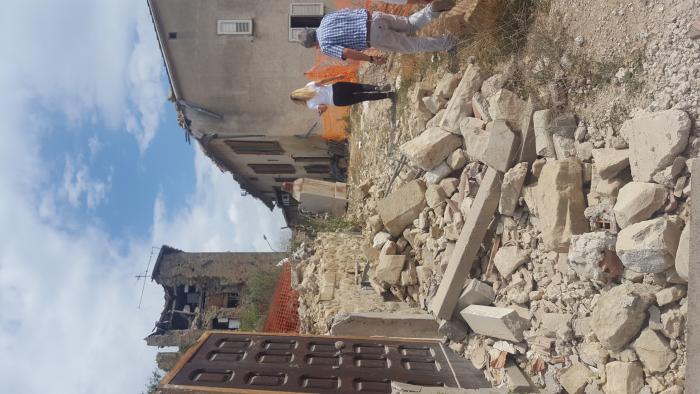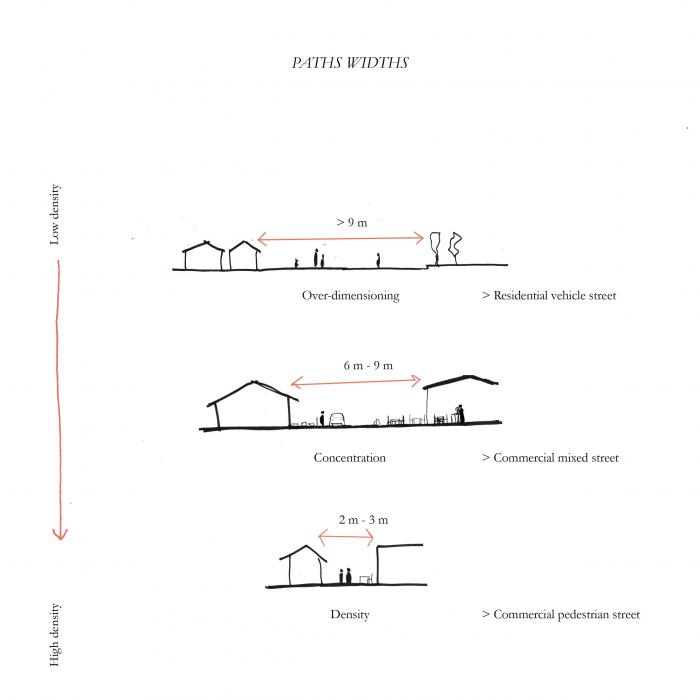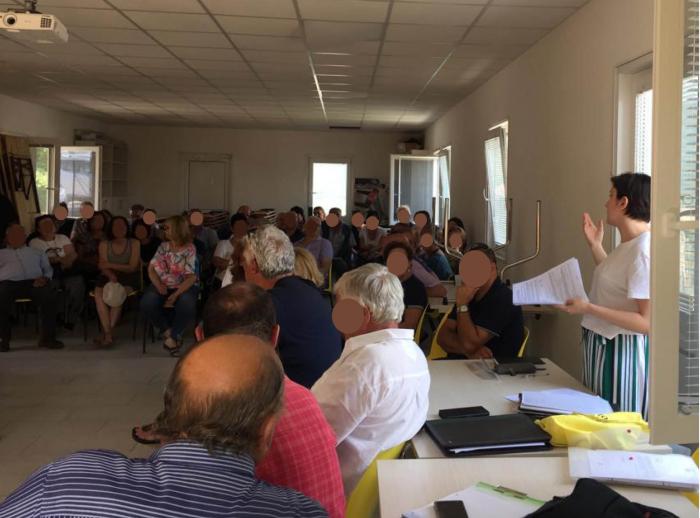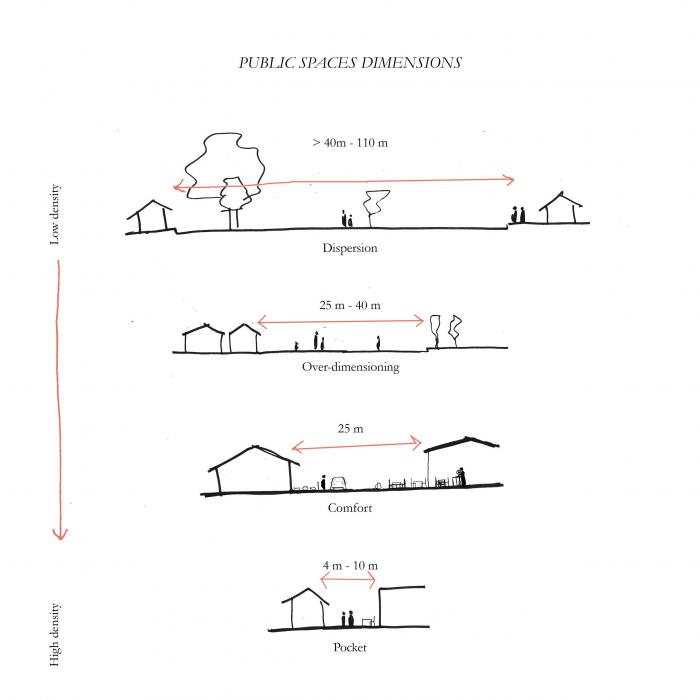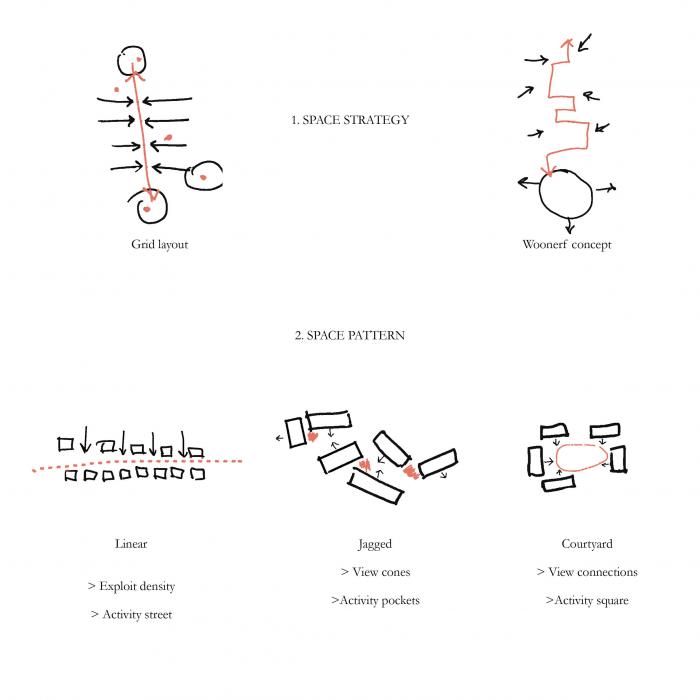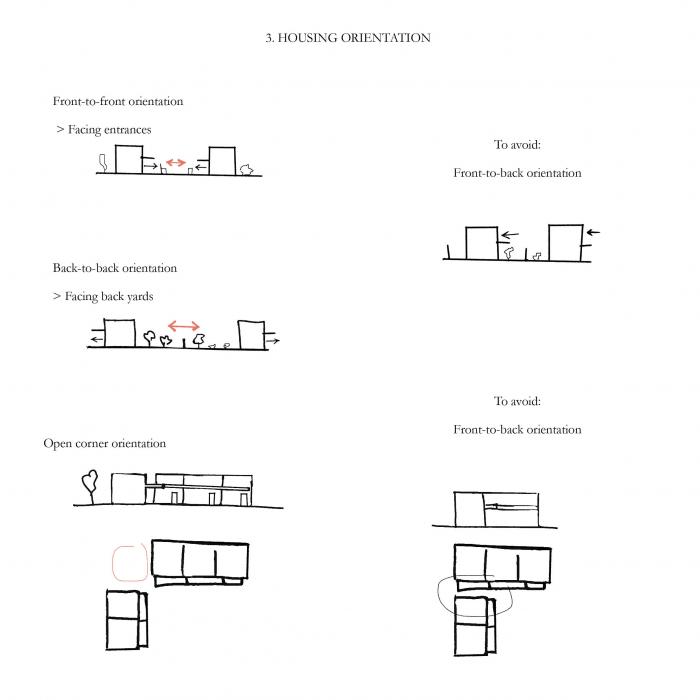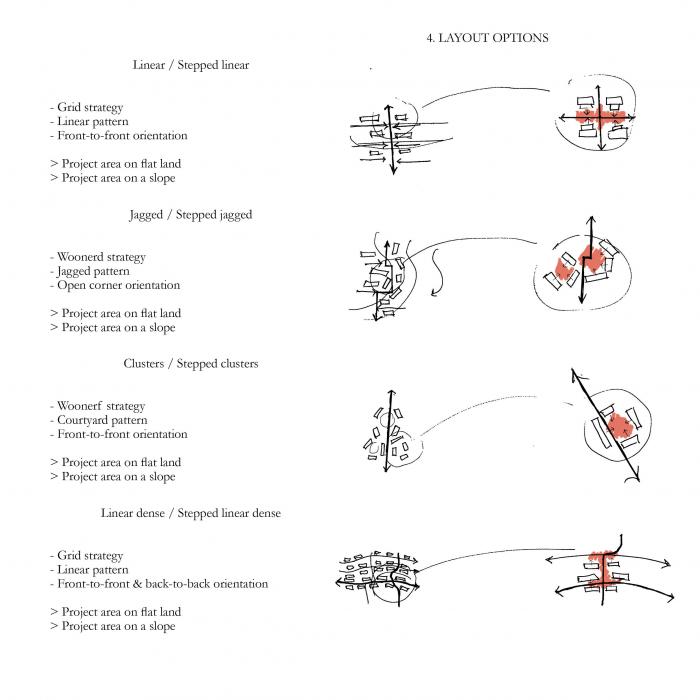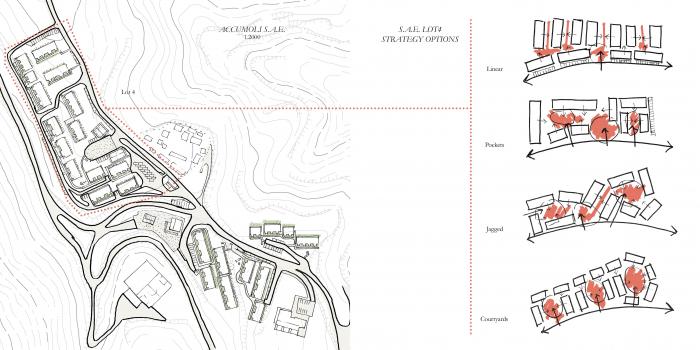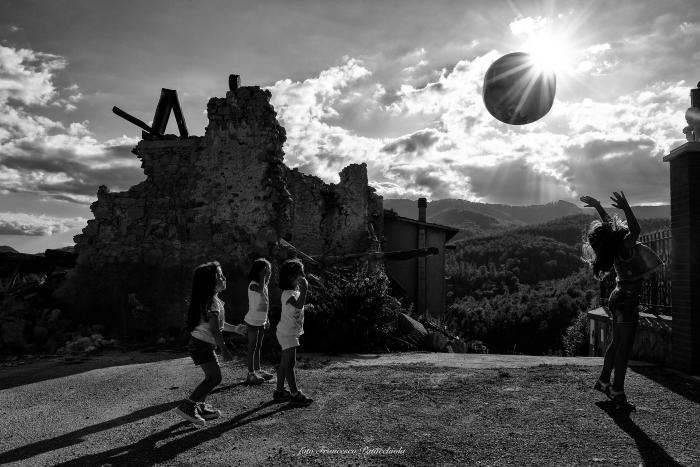I. SUMMARY INFORMATION
Project
269703
Status
Submitted
Award category
Techniques, materials and processes for construction and design
You want to submit
NEW EUROPEAN BAUHAUS RISING STARS : concepts or ideas submitted by young talents (aged 30 or less)
Project title
New planning tools from emergencies
Full concept/idea title
Community-focussed urban answers for traumatic experiences
Description
Natural disasters cause traumas, thus social breakdown. Living in post-emergency settlements is an opportunity for community recovery. This potential is identified in open space, a constant element regardless of the adopted housing systems and catastrophe. Open space guidelines for temporary settlements are proposed as resilient tools for sociality. The further development foresees to translate the guidelines in spatial parameters to be used in widespread BIM planning software.
Where is your concept/idea being developed or intended to be implemented in the EU?
Italy
Tuscany
Via G. Ferrari 31
RIETI
02100
II. DESCRIPTION OF THE PROJECT
Please provide a summary of your concept/ idea
Earthquakes connect social and psychological difficulties to architecture: the loss of the built environment follows that of place identity, which made up the social geography of the inhabitants. The vision of identity as a process assumed by this research derives from the interview with psychologists of the case study, a small village in Central Italy destroyed by the 2016 earthquake, replaced by a temporary one with modular building units which characteristics can have long-term negative effects: isolation, inertia, and social disruption. Generally, temporary settlements are dispersive urban systems, lacking identity to the point that the public realm provided is not able to attract the inhabitants outdoor. Interviews on the village life before the earthquake, comparison with other projects and the literature review, from Lynch to Krier through Gehl, confirmed the need for quality public spaces, treasurers of the spontaneity of social life and place identity that can help overcome the trauma caused by the earthquake. Despite this, the design of temporary urban centres usually follows a functional top-down approach while community involvement is essential. A structured set of design tools based on the research is proposed. These tools include the selection of elements from the past, the analysis of the environmental and social context and good practice to strengthen community cohesion. The interpretation of the past is summarized in the analysis of functions, users, and types of public spaces before the earthquake. This is essential because the perception of post-earthquake is strongly influenced by that of the previous condition. In conclusion, whatever the temporary structures, they must be contextualized and their relationality well designed, to promote social interaction in public spaces to foster the post-disaster social reconstruction and continue the 'identity process' of the place and its inhabitants.
Please give information about the key objectives of your concept/idea in terms of sustainability and how these would be met
As in this research, social sustainability is more often considered on a par with or even preparatory to environmental and economic sustainability. To achieve this, Europe provides co-design and co-implementation in urban development and daily policy to ensure the well-being of citizens. In the 2030 Agenda for Sustainable Development programme the mentioned theme is central: disasters caused by climate change, unstable political or social conditions and natural or anthropic disasters, and the associated risks and resilience. These concepts are applied here to ensure the social sustainability of people in complex contexts. This project is considered in line with the vocation to original and ethical research of the New European Bauhaus thanks to the choice of trauma cure among actions, aimed at mitigating the emergency challenges through the research field of open spaces.
It was fundamental to define the phase in which architecture can be an efficient tool for trauma recovery. Theory studies on shock handling and the experiences of psychologists who supported the population of the case study showed that life in temporary housing is the best opportunity for the community to heal before reconstruction. Most of their layouts are based on mere functionality. Thinking about design from a social perspective includes the possibility of different levels of congruences between the theoretical world of the designer and the real world of users’ lives. The design choices will have long-term repercussions on the inhabitants physical and psychological well-being. It could be less worthwhile to spend material and economic resources to reconstruct villages or cities for people that are adverse to each other and are not able to share their common condition due to their individual fragility which could lead them to even abandon the territory.
Please give information about the key objectives of your concept/idea in terms of aesthetics and quality of experience beyond functionality and how these would be met
From the research, it was evident the focus should be on the layout of the new urban development, the spatial relationship between the houses and the public space between them. The post-emergency modules would never fulfil the needs that the lost ones used to. A high-quality public space could instead satisfy these and new necessities, promoting at the same time social engagement.
The influence of new urban configurations on everyday practices is evaluated through qualitative empirical analysis of the open spaces of places that have suffered a disaster and, in preventive form, in territories at risk but not affected with tools such as 'cultural mapping'. In post-disaster cases, both the new and old open spaces are analysed, since the perception of the former is influenced by that of the latter and vice versa. The qualitative analysis of the new centres includes 'Evidence-Based Design' observations, in-depth interviews, and community participated surveys. It could be possible to move on to questionnaires on the well-being of all residents.
Previous open spaces' features provide inputs for the design of new ones. The study is done with empathy towards post-emergency scenarios, where time and resources require a few simple points of reference. The selected elements must relate mainly to the functions, distances, and peculiarities of the spaces needed to carry out certain activities. Historical and photographic documentation, descriptions of residents and urban sociology literature help this fundamental selection process of the backdrop of former social life. There are recommendations on layout, function mix and orientation of the buildings of a provisional village; considerations on appropriate interaction and walking distances, visual connections, boundaries between public and private and vehicular access. In the end, the outlined strategies are applied to the case study.
Please give information about the key objectives of your concept/idea in terms of inclusion and how these would be been met
The theme of this research revolves around the role of architecture in people’s lives after a natural disaster. Architecture can have an active role in trauma recovery after a disaster: if the new built environment promotes social interaction between the members of the community, it could be a healing tool or, on the other hand, it could prevent inclusion and foster isolation. As confirmed by studies on post-disaster phases, people affected by a seismic event go through feelings of fear, uncertainty, dis-empowerment and isolation which lead to community unbundling.
The participation of residents is fundamental: the characteristics of open spaces and the life that used to fill them are preserved in their memory and mind maps. Processes of involvement, such as participatory photographic collection and cultural mapping are suitable for this purpose to create a synthetic and structured map of socially relevant spaces to be restored. Finally, a participatory site visit is a good tool for both devastated places and those only at risk.
The project is intended as a process and not as a turnkey solution, capable of creating opportunities for appropriation and alteration of space according to the concept of affordance. This way, the project can be a device to promote empowerment and the identity process, which does not end with the post-emergency settlement construction. The created social space systems respond to immediate needs but, by being implementable, they ensure inclusion and accessibility over time.
The methodology, the analysis results and the proposed tools can be used by administrations and designers and understood by the citizens themselves involved in reconstruction processes. Thus, all stakeholders are equal actors in the dialogue for a participatory design.
Please explain the innovative character of your concept/ idea
The research is characterized by the ability to combine interdisciplinary methodologies and research tools to the themes of the project, in socially complex contexts. The work represents an original contribution with interpretative reflections and innovative and refined design projections for formal contents and languages oriented to a responsible project on the theme of post-emergency living.
Among the most evident results of this research, there is the awareness of the lack of attention to social aspects in the design of temporary settlements following an earthquake in Italy. From this research, it emerged that new design approaches with a social perspective can instead be positively developed. This unprecedented approach, not only in Italy, foresees the trauma recovery through the open space: a constant element regardless of the housing systems adopted. This kind of design can facilitate overcoming the trauma caused by a natural disaster, documented here by theoretical and empirical research.
The scientific community could use the method of analysis, selection and interpretation of the elements of the social value of the settlements to deal with the reconfiguration of urban public spaces in emergency circumstances even other than the earthquake, such as the recent pandemic events. Students, teachers and researchers dealing with social sustainability, post-traumatic scenarios, interpretation of existing and lost heritage, urban sociology and methods of qualitative analysis applied to Architecture are foreseen to be interested in the proposed research tools.
Please detail the plans you have for the further development, promotion and/or implementation of your concept/idea, with a particular attention to the initiatives to be taken before May 2022
Covid-19 emergency highlighted the importance of the lost outdoor social interaction. Open space design strategies can be resilient tools for sociality in fragile contexts. The study of post-emergency settlements, such as the ones after an earthquake, provides new inputs to create time-sensitive resilient urban answers to foster social liveliness in every situation and to be bettered over time, as in an emergency evolution. Simple and tested guidelines from post-emergencies can prevent damage to any social systems.
The design guidelines could be mentioned in the Municipal Emergency Plans or the Urban Implementation Plans in Italy, thus integrating elements related to post-emergency in Italian urban planning. From here strategies could be implemented to prevent damage to the social system in Italy and abroad.
The participative processes gathered qualitative information on the design characteristics to foster social liveliness. The future development will be to translate the collected information into quantitative data to be used in widespread BIM planning software. Softwares by well-known companies, such as Revit Generative Design and OpenBuildings Designer, allow any user to layout elements or buildings according to different parameters. By next year, this research foresees to find the spatial parameters that would ensure social interaction between the residents of post-emergency settlements based on empirical research and literature, especially urban sociology. The complete development of the proposal is currently being carried out through a PhD project at the Architecture Department of the University of Florence that will end by 2023. The parameters could be used also in other planning processes, especially for small urban spaces which have shown their value and transformation capacity during the current pandemic.
III. UPLOAD PICTURES
IV. VALIDATION
By ticking this box, you declare that all the information provided in this form is factually correct, that the proposed concept/idea has not been proposed for the New European Bauhaus Rising Stars Awards more than once in the same category.
Yes
